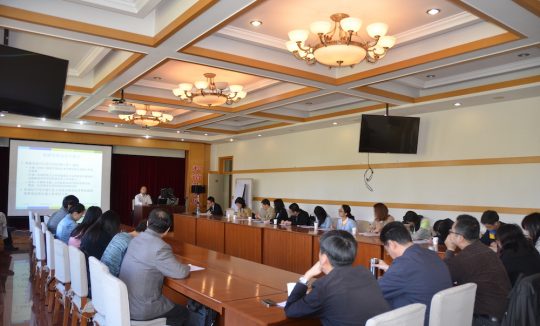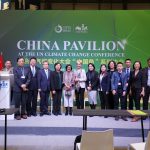Low Carbon Development
Energy and Climate Change ProgramLow-Carbon Development

Summary
Needs & Approach
Objectives
Impacts
Updates
Details & Support
Historically, economic growth in China was powered by coal and other non-renewable energy sources. As such, achieving low-carbon targets and economic growth simultaneously seems impossible.
Through our Low-Carbon Policy Development Toolkit, we show and teach Chinese government officials and policy experts that environmental goals can be achieved without sacrificing economic growth. we are changing policy making from a qualitative and experience-based process to one rooted in quantitative and science-based methods.
Needs:
Make Chinese policy making science-based and able to simultaneously achieve environmental and economic targets.
Approach:
Introduce a toolkit for policy making decision makers and incorporate the toolkit methodology into policy making curriculum.
To establish scientific and quantitative methods and tools that assist local governments to assess the costs and benefits of low-carbon policies and the impact of these polices on regional macroeconomics, in order to ultimately achieve sustainable, economic growth.
The Policy Insight of China (PIC) model from the LCD Toolkit was used to analyze and assess future energy policies and renewable energy development scenarios, which was featured in the ‘China Sustainable Development Report 2014’ issued by the Institute of Policy and Management at the Chinese Academy of Sciences.
Analysis using the PIC model from the LCD Toolkit formed the basis of the ‘China Carbon Emissions Peak Scenario Analysis and Policy Impact Assessment’ report. This provided technical support for the peak emissions scenario put forward by China, and received high level acknowledgement and approval from the NDRC’s Department of Climate Change.
The Policy Package of China (PAC) model from the LCD toolkit was used to analyze traits in Chongqing’s carbon emissions and contributed to ‘China Low Carbon Policy: 12th Five-Year Plan Evaluation and 13th Five-Year Plan Recommendations – Chongqing Case Study’. The report was submitted to the NDRC and Chongqing DRC, and the results approved by Mr. Su Wei, Head of the Department of Climate Change at NDRC. The Chongqing DRC also gave its high-level approval for the report and issued an official ‘Application of Results Certificate’.
The (PAC) model from the LCD toolkit was used in the initial construction of a LCD planning tool for Guangdong province, and to conduct analysis and evaluation of the current LCD situation in Guangdong.
GEI’s cooperative partner, the Institute of Policy and Management at the Chinese Academy of Sciences (CAS-IPM), applied to develop ‘China’s current low carbon policy assessment and 13th Five-Year Plan adjustment and formulation research’. CAS-IPM obtained the approval of the China Clean Development Mechanism’s Fund Audit Council, and GEI will be a major participant in the project.
TBC
Partner:
International Partner: US-based, Center for Climate Strategies;
Domestic Partners: Chinese Academy of Sciences – Institute of Science and Development; National School of Administration; Tianjin Academy of Governance; Shanxi Province Ecological Environment Research Center; Guangdong Academy of Social Sciences; Guangzhou Jinan University Institute for Resources, Environment and Sustainable Development; Chinese Academy of Sciences – Guangzhou Institute of Energy Conversion, Gansu Carbon Emissions Trading Center, Shanghai Information Center for Low Carbon Economy and Climate Change, Ningxia CDM Environmental Protection Service
Duration: 2011 – present
Location: China
Donor: blue moon fund; Rockefeller Brothers Fund; Oak Foundation (until 2016)



